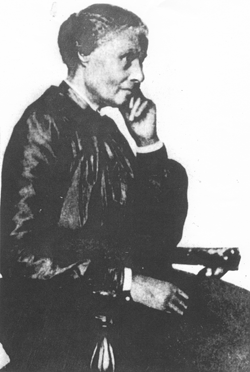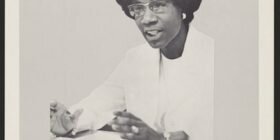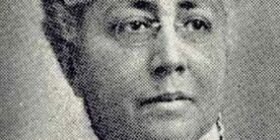Heroines of History: Helen Richey – A High-Flying Female
Heroines of History: These are American women, and their actions were not motivated by fortune or fame. There was no glory, and in many cases very little recognition for their activities. They simply did what needed to be done, and they did so in an extraordinary way. They roared without making a sound and it is time that they were given a voice. Helen Richey, we hear you.
Born in McKeesport, Pennsylvania in 1909, Helen Richey was a tomboy through and through. Eschewing the traditional dresses and dolls prescribed for her gender, Helen preferred to wear pants, keep her hair cut in a short bob and play with mechanical toys that were made for boys. As the daughter of the local superintendent of schools, Helen was fortunate enough to not only be able to attend school, but she graduated from High School in 1927 and then continued on to Pittsburgh’s Carnegie Tech for a career in education. However, she was not particularly inclined to follow in her father’s career path, and finding her classes dull she dropped out after only a couple of months. Newly liberated from school, Helen had no direction or idea what path she wanted to take. At the time she was living next to an airfield and on a lark one day she and a friend decided that they wanted to take a ride on an airplane.
They secured their ride and flew to Cleveland, Ohio, sitting amongst great sacks of mail. As chance would have it Ruth Nichols, a female aviator, landed at the Cleveland airport that same day. Seeing Nichols in her flight suit with the press snapping pictures all around her, instantly gave Helen clarity as to what she wanted to do. Helen enrolled in flight school and was awarded her pilot’s license on June 28, 1930. In celebration of her accomplishment, her father bought her an open-cockpit bi-plane. However, a pilot’s license was not enough. Helen was smart enough to realize that the future for pilots would be with commercial airlines, so she went on to earn her commercial pilot’s license on December 4, 1930.
Despite this, the thrill of stunt flying lured her away from the airline industry, and Helen became an aerobatic pilot. Having no formal training in this type of flying, she relied on observation and her natural talent to hone her craft. By 1932 her flying skills had earned her nation-wide notoriety, especially after she finished third in the Amelia Earhart Trophy Race. Because of this popularity, Frances Marsalis, another prominent female aviator, contacted Richey and in 1933 Richey was Marsalis’ co-pilot when they set a new record for a ten-day endurance flight. To accomplish this feat the women circled around the city of Miami with two other pilots flying up to meet them over 83 times to provide fuel, food, water and repair materials. Without the modern advances that we enjoy now, refueling consisted of one of the two pilots climbing out of the hatch, catching the fuel nozzle as it descended from the other plane and shoving it into the fuel tank. Not only was this extremely dangerous, but it also presented a very high likely hood that they would get sprayed with gasoline. Helen gained acclaim when on the sixth day the nozzle came loose and catching on the wing, tore the fabric. In order to ensure that they could stay aloft long enough to set the record, Richey climbed out onto the wing with needle and thread and repaired the tear. Upon landing, officials declared that they had set a new record for a refueling endurance flight by staying aloft for 237 hours and 42 minutes and flying 23,700 miles. Marsalis and Richey had also become close friends.
Richey continued her aerobatic flying appearing in exhibitions and races across the country. In August 1934, she flew in the First Women’s National Air Meet. She finished sixth in the 20-mile race, but her eyes were set on the featured event, a 50-mile race. With only six miles to go, Richey and Edna Gardner were fighting for the lead when Marsalis came up from behind and tried to overtake them. However, going around a turn, Marsalis’ plane slipped in the backwash of the other planes, causing her wing tip to scrape the ground catapulting the plane end over end until it came to rest in a field. Richey went on to win the race, but the news that Marsalis died from her injuries while en route to the hospital made it a bittersweet victory. Adding to that victory Helen was awarded the prestigious Fairchild Trophy later that year. After only four years of flying, Helen was at the top of her game and proving herself to be one on the best pilots in the nation, but she had lost her taste for aerobatics.
Still reeling from the loss of her friend, Helen accepted a job with Central Airlines and became the first woman to fly a commercial airliner on a regularly scheduled mail route on December 31, 1934. Newspapers across the country sited Central Airlines as breaking new ground and that Helen was leading the way for the “dawn of women coming of age.” What Helen had failed to realize is that at the time of her hire, Central Airlines was in stiff competition with Pennsylvania Airlines for the best mail routes. So Central Airlines viewed Helen less as a pilot and more as a publicity goldmine. She spent more time signing autographs, attending events and handing out postcards then actually flying. They also placed heavy restrictions on which routes she could fly and the Civil Aeronautics Authority, CAA, recommended that she only fly in fair weather. Helen also faced heavy discrimination from the male pilots and was refused admittance into their union.
Fed up, Helen quit after only ten months and returned to flying privately and in competition. In 1936, Richey set a new world record of 77 miles per hour in a Class C light plane and three months later set an altitude record of 18,000 feet in a plane weighing less than 440 pounds. Despite the fact that America was not yet engaged in war, it had become evident by the late 1930’s that our involvement may become necessary. To that end, Richey attended an intensive pilot instructor’s course and became the first woman to not only earn a pilot instructor’s license, but also to be assigned to train military pilots. Her assignments took her to Philadelphia, Boston and Los Angeles. Completing that assignment, she returned to McKeesport, and after some formal aerobatics training, began to teach airline pilots how to be instructors.
It wasn’t until January of 1942 that Helen was officially brought into the war. After receiving a letter from a colleague Jacqueline Cochran, Helen applied for the women’s division of the British Air Transport Auxiliary, ATA. She was immediately accepted and after three weeks of training in Canada, Helen sailed for England in March. She was assigned to the White-Waltham aerodome located near Maidenhead, Berkshire. She started her training and took her first flight on April 11 in a Miles Magister. The ATA girls were charged with ferrying planes from the factories where they were built to RAF airfields all over Britain. By June, in addition to the Magister, she had flown Harvards, Oxfords, Masters, Hurricanes and Albacores. In July she took up a Spitfire for the first time and ended in a crash landing. Determined not to let it get the best of her, she went back up in August and flew nothing but Spitfires for the rest of the month.
The ATA girls were accustomed to flying all different aircraft at a moments notice and as such they all carried “Ferry Pilot’s Notes” which detailed how to fly each plane and any pertinent quirks or idiosyncrasies. Richey was recorded as saying that, “Sometimes we would hurriedly skim through the pilot’s operating manual to find out how to take off, then keep reading the book while in flight to find out how to land the damned thing.” These missions were dangerous not only because of their unfamiliarity with the aircrafts, but also because there was always the risk of encountering the enemy.
By September, Helen found herself in charge of the twenty American pilots when Cochran returned to the US to organize a group of women pilots there. It was also around this time that Helen’s mother fell ill. Wanting to be closer to home, Richey resigned in December. By the time she flew her last ferry in January of 1943, Richey had amassed over 200 hours in the air. She sailed home in March, and her mother passed away shortly thereafter. Despondent and restless Richey reached out to her friend Jacqueline Cochran and was immediately accepted into the Women Airforce Service Pilots or WASP.
The mission of WASP was much the same as the ATA girls. After a short training in Texas, she was assigned to the Second Ferrying Group of the Air Transport Command in Wilmington, Delaware. Here she flew ten different missions in a variety of aircraft. In March of 1944, she was transferred to Kansas City, MO for a time so that she could train on bombers and cargo planes, before returning to Delaware. While at WASP, Helen mostly kept to herself, and rarely mentioned her time at ATA or her background in competition flying. By the time that WASP disbanded in December of 1944, Helen had flown 300 hours in 27 different types of aircraft. She had attained the rank of Major.
With the war over, Helen returned to McKeesport to her family. However, aviation jobs were scarce due to the influx of male pilots returning from the war. Despondent, she moved to New York City. Having never fully recovered from the death of her friend Marsalis or the recent death of her mother, and believing that her flying career was over, Richey fell into a deep depression. She felt that there was no place for a female aviator. That there was no place for her. Entreaties and offers of help from other WASP pilots or family fell on deaf ears. On January 7, 1947, Helen Richey took her own life. Her hometown of McKeesport named a park in her honor and on March 11, 2010, Richey was posthumously awarded the Congressional Gold Medal for her service in World War II.
Helen Richey this is in your honor. Thank you for all that you did.
Comments
comments







No comments yet.